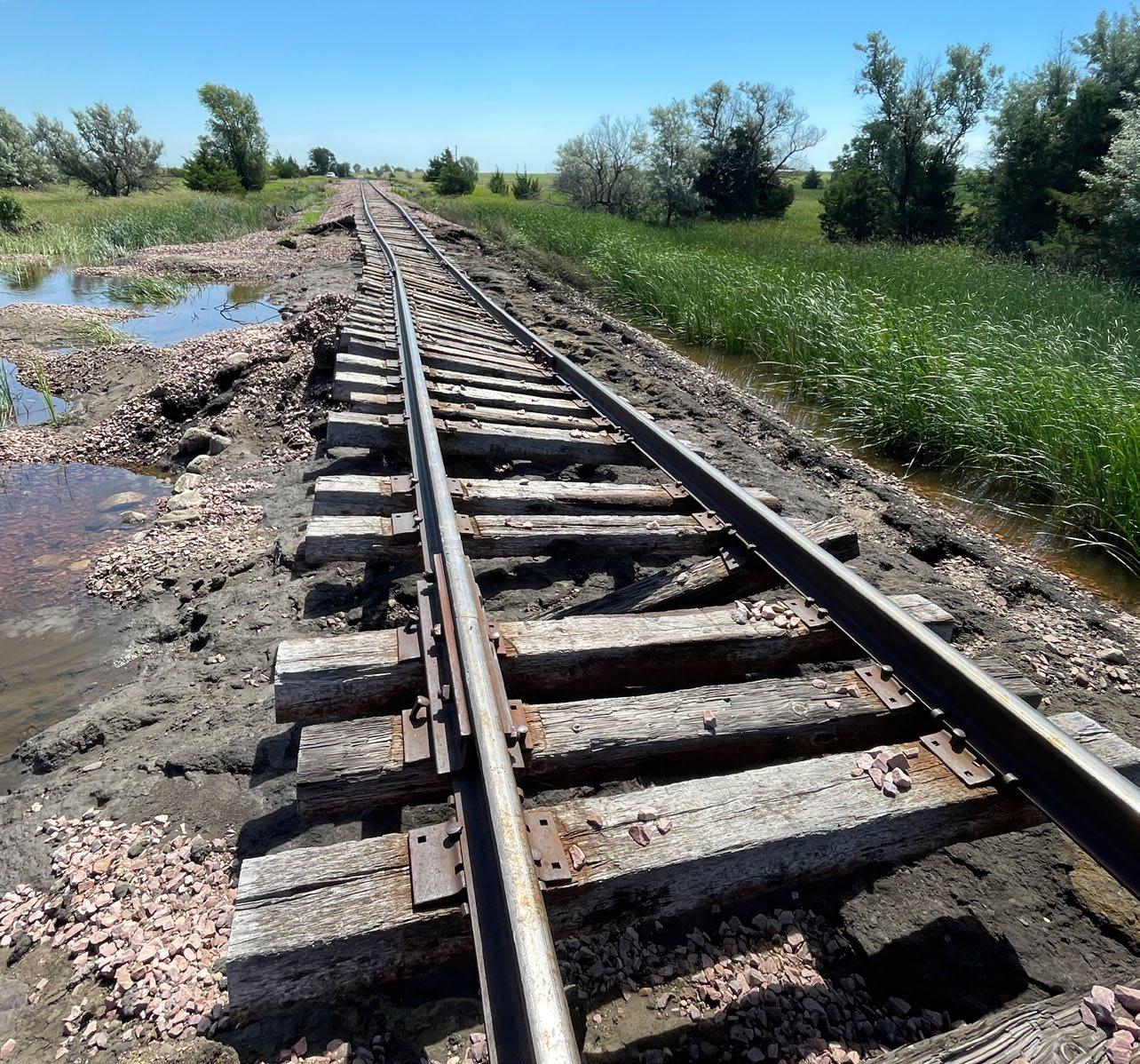
4 minute read
Ringneck Recovers After Major Flood
by OneWatco
As much as 17 inches of rain fell on parts of South Dakota between June 20 and 22. The deluge caused widespread flooding across the region, significantly impacting much of the Ringneck & Western Railroad’s (RWRR) Chamberlain Subdivision.
After the water receded, the RWRR crew found damage along 55 miles of track. Crossings and culverts were washed away. Entire sections of rail were left suspended where water carried away ballast and ties or carved into the shoulder of the railbed. In total, they located 46 washouts, ranging from 10 to 250 feet, and eight damaged bridges.
Work to restore service began on June 25, and it was an all-hands-on-deck effort.
“Our conductors and engineers really stepped up to the plate,” said Chadd Thimesch, RWRR general manager. “They learned how to run front-end loaders and build track panels. We had divisional engineers, VPs, even SVPs here on the ground slinging ties, helping fill coolers, and making sure we had all the resources we needed. The Eastern Idaho Railroad even sent one of their rotary dump trucks.”
The Watco team and an army of contractors worked nearly around the clock. They sometimes started as early as 3 a.m. to avoid the heat that followed the storms, which caused the already-stressed rail to kink in some places. The efforts paid off. After two weeks of dumping ballast and riprap, replacing ties, culverts, and crossing panels, and making bridge repairs, the RWRR sent two test locomotives from Mitchell to Kimball on July 10. On July 15, they moved their first loads: a 115-car shuttle train the 41 miles from Kimball to Mitchell.
“I was highly impressed with the team up here,” Thimesch said. “Being able to run that test train after just two weeks and then the shuttle a few days later is just a huge win for the team, and they did it all while being diligent and safe.”


They faced challenges along the way and took steps to mitigate damage from future flooding. Quarries were inundated with rock demand and closed for four days to celebrate Independence Day. Many contractors also left for the long weekend. Equipment broke down. Ties and rail were difficult to secure because other railroads in the area were facing similar challenges.
There are areas where the creeks run directly next to the track. When floods come, they eat away at the bank, pulling the ballast and sometimes track into the water. In some places, the base level of the creeks are 20 feet or more below track level. The team drove steel sheeting into the ground and backfilled between it and the rail with dirt, rock, and riprap.
Most of the riprap used on the RWRR is concrete rubble from demolished construction or pavement projects, which contains rebar. This makes it a useful, cost-effective way to reinforce dirt embankments while making use of something that would otherwise end up in a landfill.
There’s still work to be done. While most of the track is restored, it will take until the first week of August to return it to its previous condition or better. The team continues to dump more ballast, tamp, and regulate across the line. As of July 15, nearly 15,000 tons of ballast, 5,000 tons of riprap were laid, and more than 100 pieces of steel sheeting were installed.
“The support from the Watco team has been fantastic,” Thimesch said. “They’ve been making sure we have the resources we need and their advice and expertise was huge. They’ve definitely shown the family aspect of Watco and it makes you proud to be part of team that puts forth the time, effort, and manpower to support each other.”






